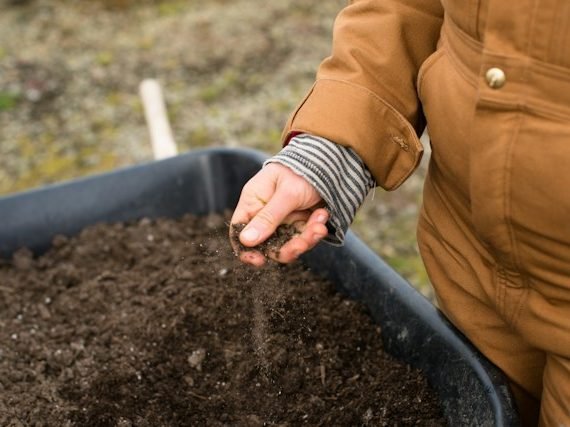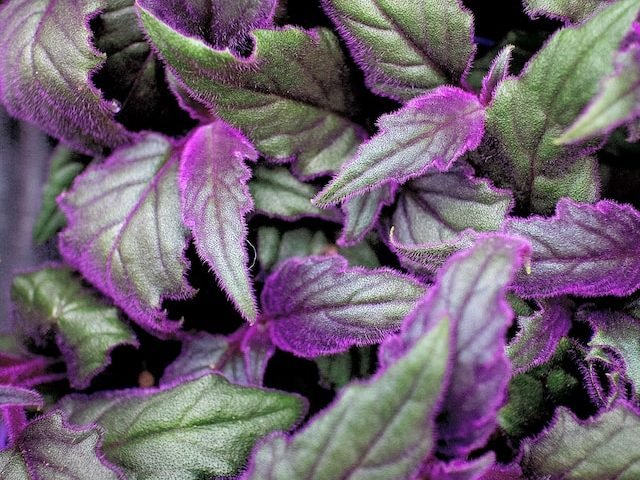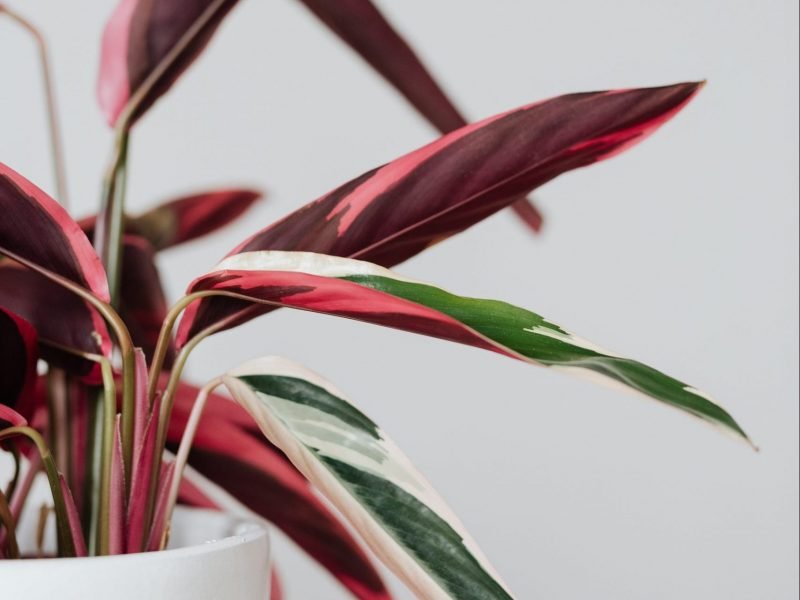Maidenhair Fern

Introduction to Maidenhair Ferns
Maidenhair Ferns are an elegant variety of Ferns that are highly admired for their delicate, feathery fronds. Originating from a diverse group of species, Maidenhair Ferns can be found in various regions across the globe, including tropical, subtropical, and temperate areas.
Known for their visual appeal, they also hold significant historical and cultural value. In Greek mythology, these ferns were associated with the hair of Venus, the goddess of love. Their scientific name ‘adiantum’ is a term derived from Greek, translating to ‘unwetted’, which refers to the fern’s ability to repel water.
It’s important to know though that Maidenhair Ferns are not the easiest plants to care for. They require specific conditions to thrive, including high humidity, regular watering, and indirect light. If something is even a little off, you’ll notice issues across the leaves, stems and root system pretty quickly with these ones…
Maidenhair Fern Varieties: Differences and Similarities
The Maidenhair Fern, scientifically known as Adiantum, is a genus comprising of over 200 species of ferns. However, a few varieties are especially popular due to their unique characteristics, visual appeal, and adaptability to indoor environments.
Adiantum raddianum
The Adiantum raddianum, commonly known as the Delta Maidenhair Fern, is one of the most prevalent varieties. It boasts delicate, feathery fronds and small, triangular leaflets. This variant is loved for its graceful and airy appearance.
Adiantum capillus-veneris
Also known as the Venus Maidenhair Fern, Adiantum capillus-veneris features slender, black stems that support fan-shaped leaflets. Its lacy, frilly fronds are a striking contrast against the sturdy, wire-like stems.
Adiantum aleuticum
The Adiantum aleuticum or Aleutian Maidenhair Fern displays a vibrant green color and a unique frond structure that sets it apart from other varieties. Instead of the usual triangular leaflets, this variant has crescent or fan-shaped pinnae perched on a dark, wiry stem.
Adiantum pedatum
The Northern Maidenhair Fern, Adiantum pedatum, has a distinctively different look. Its fronds are divided into finger-like projections, each carrying several tiny leaflets. The result is a beautiful, bushy fern with a more upright growth habit than its counterparts.
Lighting requirements for your Maidenhair Fern
Like many ferns, the Maidenhair is a forest dweller. In its natural habitat, it enjoys soft, diffused light filtering through the trees. Therefore, when growing this Fern indoors, it’s important to mimic these conditions for optimal growth.
Indirect Light
While this fern loves bright light, direct sunlight can be extremely detrimental and should be completely avoided. The thin, delicate fronds of the Maidenhair Fern are highly susceptible to scorching and it can happen pretty quickly too if exposed to too much sunlight.
Low Light
Maidenhair Ferns can also tolerate some low light conditions. This makes them a versatile choice for rooms with less natural sunlight. However, growth may be slower in these conditions, and the fern’s lush green color may not be as vibrant so that’s worth considering when choosing the right placement.
Artificial Light
If your home doesn’t offer ideal lighting, there is another option! Maidenhair Ferns can also do well under fluorescent lighting. A few hours under a grow light each day can provide your fern with the light it needs to thrive.
Watering your Maidenhair Fern: Tips and Tricks
Proper watering is a crucial aspect of Maidenhair Fern care, as these plants thrive best in consistently moist soil conditions. However, they are also quite susceptible to overwatering so striking the right balance can be a bit challenging.
For the best results, consider the following tips and tricks:
- Avoid letting the soil dry out: Maidenhair Ferns require a constant supply of moisture. Their thin, delicate fronds are susceptible to drying out if the soil becomes too dry. As a general rule, water the plant as soon as the top inch of soil feels dry to the touch.
- Do not overwater: While the Maidenhair Fern likes constant moisture, it does not tolerate waterlogged soil well. Overwatering can lead to root rot, which is a common cause of plant death. Check the moisture level of the soil regularly to ensure the fern is not sitting in water.
- Use tepid, not cold water: Maidenhair Ferns prefer tepid water. Cold water can shock the plant’s roots and may lead to leaf drop. Always allow tap water to come to room temperature before watering.
- Water from the bottom up: Maidenhair Ferns benefit from bottom watering. This approach helps to ensure that the roots receive sufficient water without the risk of wetting the leaves, which can lead to problems such as leaf spot. Bottom-up watering also helps with the stability of the plant as it encourages the roots to grow downwards.
Humidity: What Maidenhair Ferns Need
This species, native to tropical and subtropical regions, is adapted to the consistently high humidity levels of these areas. Therefore, maintaining a humid environment will help you to avoid common issues such as dry brown leaves and stems.
Generally, Maidenhair Ferns prefer a humidity level of at least 60%. They can tolerate lower humidity levels down to 50%, but their growth may be hindered. On the other hand, very high humidity levels (above 80%) can lead to the development of fungal diseases.
Here are some of our favourite easy ways to increase the humidity:
- Using a Humidifier: A humidifier can help maintain the required humidity level, especially in dry indoor environments (and you don’t need to do anything apart from turning it on). Remember to clean the humidifier regularly to prevent the buildup of bacteria and fungi.
- Grouping Plants: Placing your Maidenhair Fern near other plants can increase the humidity around it, as plants release moisture into the air around them.
- Misting: Regularly misting your Maidenhair Fern with water can also increase the humidity. Use room temperature or lukewarm water to avoid shocking the plant. However, avoid excessive misting as it can lead to fungal growth on the leaves.
- Water Tray: Placing a tray filled with water near your fern can increase humidity as the water evaporates. Place pebbles in the tray to increase the surface area for evaporation, and place the plant on the pebbles to prevent waterlogging.
Fertilizing Maidenhair Ferns: What, When and How
What to Use
When selecting a suitable fertilizer for Maidenhair Ferns, it is advisable to use a balanced, water-soluble formula. Look for a product that has an equal ratio of Nitrogen (N), Phosphorous (P), and Potassium (K), often labeled as 20-20-20 or 10-10-10.
These three primary nutrients play a vital role in the growth and health of the plant. Nitrogen promotes lush, green foliage, Phosphorous aids in root development and boosts flowering, and Potassium enhances the overall vigor and health of the plant.
When to Fertilize
Fertilizing should be done only during the growing season, which for Maidenhair Ferns is typically from late spring to very early autumn. During this time, fertilize about every 3-4 weeks.
Fertilizing during the plant’s dormant period may lead to an accumulation of unnecessary salts in the soil, which could potentially harm the plant’s delicate root system.
How to Fertilize
Before applying fertilizer, ensure that the plant’s soil is damp. This can be achieved by watering a little bit a day before fertilizing. Dilute your chosen fertilizer with water, following the instructions on the product label.
Apply the diluted fertilizer to the soil, making sure not to splash any on the fern’s delicate fronds, as this can lead to leaf burn. After application, water the plant thoroughly to ensure that the nutrients are evenly distributed within the soil.
Pruning Maidenhair Ferns: How to Keep Them Healthy
Pruning is not just an aesthetic choice as many think it is; it also contributes significantly to the plant’s overall well-being. The following sections will provide a detailed guide on how to properly prune your Maidenhair Fern.
When to Prune Maidenhair Fern
It is generally recommended to mainly prune Maidenhair Ferns during their active growth phase, which typically falls in the spring and summer months. During this period, the plant is more resilient and can recover more readily from the stress of pruning.
However, if the Fern displays signs of disease or infestation, immediate pruning may be required to remove dead, dying, brown or yellow leaves, regardless of the season.
Tools Needed for Pruning
Always use sharp, clean scissors or pruning shears. The sharpness ensures a clean cut, reducing the chances of damage to the plant, while cleanliness prevents the spread of disease.
Steps to Prune Maidenhair Fern
- Examine the plant: Before you start pruning, it’s crucial to thoroughly examine the plant. Look for dead or yellowing fronds, as these are the ones you’ll want to remove.
- Start with dead fronds: Begin the pruning process by removing dead fronds. This helps to redirect the plant’s energy towards healthy growth. Alwats cut the fronds at the base, close to the soil.
- Prune yellowing fronds: Yellowing fronds indicate that they are unhealthy, but not quite dead. These should be pruned next, using the same method as for dead fronds.
- Thin out healthy fronds: If your Fern is quite dense, some thinning may be necessary. Remove some of the healthy fronds to allow for better air circulation and light penetration. It can be daunting to cut healthy parts of your plant but it’s worth it as it can promote healthier growth overall.
Maidenhair Fern Growth Rate
The growth rate of the Maidenhair Fern is generally considered to be moderate, though it will be impacted by several environmental factors as well as your care routine. To ensure optimal growth, it’s essential to provide this delicate fern with an environment that closely mimics its native habitat.
In perfect conditions, a healthy Maidenhair Fern can reach a height of 1-2 feet and a similar spread within a couple of years.
Slower Growth Rate
A slower growth rate could be due to adverse conditions or inadequate care. For example, a Fern placed in a location with too little light, low humidity, or cooler temperatures may struggle to grow. Additionally, underwatering or overwatering, along with poor soil quality or lack of fertilization, can all contribute to slowed growth and dead leaves that you’ll have to remove.
Maidenhair Fern Toxicity
Maidenhair Fern Toxicity to Humans
Fortunately, the Maidenhair Fern is classified as non-toxic to humans. There are no known harmful compounds present in any part of the plant that could potentially lead to adverse health effects if ingested or touched.
However, it is always advisable to err on the side of caution. If a large quantity of the plant is ingested, it could induce mild gastrointestinal discomfort, although instances of this are rare.
Maidenhair Fern Toxicity to Pets
Both the American Society for the Prevention of Cruelty to Animals (ASPCA) and the Pet Poison Helpline list the Maidenhair Fern as non-toxic to dogs and cats. This luckily means that pet owners can grow this plant without fretting over potential toxicity issues.
Even so, certain animals might be allergic to the plant, leading to symptoms such as skin irritation or digestive upset if they consume it so it’s always recommended to exercise caution.
Maidenhair Fern FAQs
How quickly do Maidenhair Ferns grow?
Maidenhair Ferns are fairly slow-growing houseplants so don’t expect there to be constantly new leaves popping out from every stem.
Can Maidenhair Fern survive in low light?
Yes, in fact, Maidenhair Ferns thrive in lower light levels. They hate bright direct light as they burn and dry out very quickly.
How often should I water my Maidenhair Fern?
You want to take a little but often approach to watering your Maidenhair Fern in order to keep the soil event moist.
Are Maidenhair Ferns toxic?
Maidenhair Ferns are safe and non-toxic so are perfect for every home!
Common Problems with your Maidenhair Fern
Here are some common issues that you might run into. It’s important to know what the early warning signs are so that you can diagnose and treat any issues early to give your plant the best chance of bouncing back.
Why are my Maidenhair Fern’s leaves curling?
If your Maidenhair Fern’s leaves are curling inwards, this is an indication that the air is too dry. Try increasing the humidity levels and the leaves should return to normal fairly quickly.
Why does my Maidenhair Fern have dry brown leaf tips?
Brown leaf tips on a Maidenhair Fern are a sign that the humidity levels are too low. Try moving it to the kitchen or bathroom where there is naturally higher humidity.
Why are leaves falling off my Maidenhair Fern?
If your Maidenhair Fern is dropping leaves quite regularly, it is an indication that the air is too dry. Try misting your fern at least once a day and leaves should stop falling as often.
Why does my Maidenhair Fern have brown leaves?
Brown leaves on a Maidenhair Fern could be a sign of two things. Either your fern is receiving too much sunlight or it is sensitive to the water. This often occurs in a hard water area. We recommend letting the water sit for a day so the fluoride evaporates or using rainwater.















